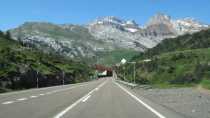
Best time to visit
117 things to do in Spain

Las Turbas de Cuenca (Camino del Calvario)
Las Turbas is the most popular traditional procession taking place during the Holy Week in Cuenca
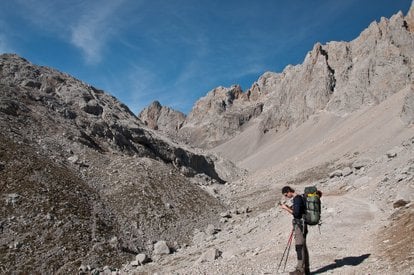
Picos de Europa Hiking
Conquer the most beautiful mountains in the Pyrenees known as "the Dolomites of Spain"

New Year's Eve
Eating 12 grapes, wearing red coloured underwear and preparing a special cake is only a part of the incredible celebration in Spain

Tabernas, Europe's Only Desert
Like the real Wild West, Spain has its own great desert, where the temperature has been known to reach 48 °C and where many Hollywood movies have been filmed

Villajoyosa Moors & Christians Festival
For eight days, the whole city returns to the past by recreating a spectacular and brilliant battle that occurred in 1538

La Endiablada
Enjoy a unique event called "The Brotherhood of the Devils," which is possibly the oldest tradition in Spain

Bullfighting Season
Corrida is the most traditional, but also the most controversial of Spanish Fiestas

Ortigueira's Festival of Celtic World
One of the most popular folk music festivals in the world takes place in the Spanish seaport of Ortigueira

Flamenco
What is probably the most famous of Spanish traditions is so often misunderstood—flamenco is not a dance!

Carnaval de Los Indianos in La Palma
Witness one of the most exciting and popular fiestas of the Santa Cruz de La Palma Carnival

Fuente Dé Cable Car
From climbing to the top of Spain to hanging in the air and watching the famous mountain, Picos de Europa, from a bird's eye view—everything is possible in Cantabria

Rio Tinto
Discover the red river and cosmic landscapes of an ancient mining city in Andalusia

Anguiano Stilt Dance
Eight men on stilts in ornate waistcoats and long skirts will hurtle down the cobbled alley in a unique dance

Los Escobazos in Jarandilla de la Vera
In the city of Jarandilla de la Vera, locals celebrate an important holiday by hitting each other with brooms of fire
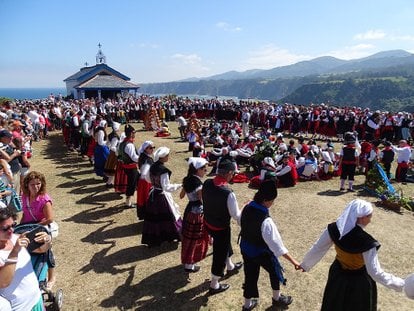
Fiesta de La Regalina in Cadavedo
This big festival in Cadavedo is all about the dances that take place near a church on top of a cliff with a spectacular view

Luarca Maritime Procession of Virgen del Rosario
A beautiful fishing village holds a unique procession to commemorate victims of the sea

Padrón Peppers (Pimientos de Padrón)
Some peppers in this dish are very spicy, while some are not. Spaniards dare you to try your luck and choose!

Fuente de Piedra Flamingos
Some of the most beautiful birds on the planet gather in the Laguna de Fuente de Piedra where you will find yourself in the spectacular countryside away from the coast

Semana Santa (Holy Week) & Easter
The most important holiday in Spain when every city holds amazing and emotional celebrations

Spain to Portugal Zip Line (Limite Zero)
Take a ride on the world's only international zip line that will take you from Spain to Portugal and a one-time zone behind
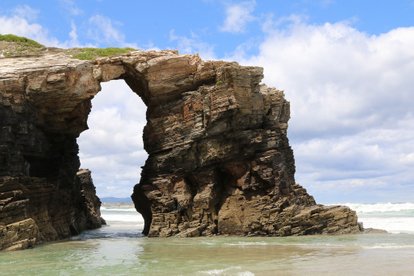
As Catedrais (Cathedrals) Beach
If you visit this beach in Galicia on Spain’s northern coast, you will understand why it has been designated as a national monument

Girona Flower Festival (Temps de Flors)
Houses, decorated with amazing floral arrangements, transform the old city of Girona into an incredible bouquet of landscapes, colors, and beauty
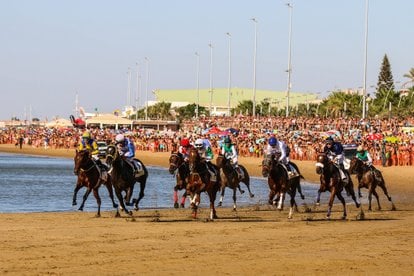
Sanlúcar Horse Racing
Horses, water, sunset... What could be more picture perfect that a horse race on the Spanish Coast?

Volcano Grill on Lanzarote Island
Taste meat cooked over an active volcano in the middle of stunning Lanzarote surroundings

Kayaking in Galicia
Galicia, in the northwest corner of Spain, is a real paradise for kayaking with beautiful views and soft blue water

Es Firo Sóller Festival
One of the largest festivals on the Balearic Islands will surprise you with its amazing costumes and noisy parties

El Cipotegato Festival
If you are overwhelmed by the number of Spanish festivals, simply choose the most colourful one

Wine Fight (La Batalla del Vino)
Red wine seems to be flowing in the veins of locals in Haro. Once a year it also fills up the streets of the town—at the exuberant battle of wine

Primavera Sound
Barcelona's edition of Primavera Sound attracts more and more people from every corner of the world

Salmorejo Cordobés
Cold soup of Cordoba made of tomatoes and bread rivals the well-known Gazpacho

Tinto de Verano (Spanish Summer Wine)
Tinto de verano is a refreshing red wine-based cocktail similar to sangria but not the same

Las Luminarias Festival
A Spanish festival of fire and horses dedicated to St. Anthony

Noche de San Juan
Bonfires and songs highlight the celebration of St. John's Eve and summer solstice in Spain

Las Fallas (Fire Festival)
A loud week full of fireworks and processions that ends with impressive igniting of huge dolls

Els Enfarinats
Every year, the town of Ibi is seized by frantic soldiers who reestablish new justice with flour bombs, eggs, and firecrackers

Orange Blossom (Azahar)
See beautiful Seville when it's adorned with orange blossom and when aroma permeates the air

Las Médulas
Las Médulas Cultural Landscape is one of the most beautiful spots in the country listed as a World Heritage Site by UNESCO

Duratón River Kayaking
Want something new? Try kayaking in a picturesque place

San Isidro Festival
The holiday of the patron of the city has been celebrated in Madrid for centuries

Sales (Rebajas)
The most pleasant thing in the season of sales in Madrid is to have fun and save money at the same time
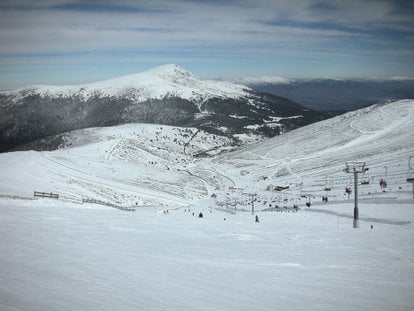
Skiing and Snowboarding around Madrid
Although Madrid rarely sees snow, you can enjoy skiing just 52 km away from the capital atop some impressive mountains

Three Kings Parade (Cavalcade of Magi)
The Three Kings are responsible for fulfilling the traditional tasks of Santa Claus, namely for receiving letters and distributing gifts

August Fiestas (Fiestas de Agosto)
Do not miss the vibrant August holidays in the heart of Spain

Fiesta Dos de Mayo (Day of Madrid Festival)
Fiesta Dos de Mayo is the holiday of the community of Madrid, commemorating a historical uprising

White Water Rafting
Depending on the season, the river changes its mood, and therefore white water rafting can be more or less extreme

Corpus Christi
Joining this colorful parade is a great way to get to know Spanish traditions and customs

La Bienal de Flamenco
Don't miss the biggest flamenco event worldwide

Madrid Pride Week
The largest LGBT Pride Festival and LGTB Pride Parade in Europe

La Pedriza Climbing
One of the best areas in Spain for granite rock climbing and hiking, just an hour drive from the capital

Festimad
The most famous musical event in the capital, Festimad attracts big names and young talents

El Rocio Pilgrimage or Romería de El Rocío
A small village of 1000 residents comes to life with a million of flamboyant pilgrims and their frantic celebration of the Virgin of el Rocío

La Tomatina
Experience Valencia’s silliest and funniest event at the infamous tomato fight

Madrid Carnival
Masks, wigs, and fancy dresses... This holiday without rules is celebrated on a large scale

Sardana
A traditional Catalan group dance that could be performed by all people of all ages

Mona de Pascua
Delicious Easter cakes that are given by godparents to their godchildren

Three Kings Day
Epiphany is a great holiday in Barcelona celebrated by La Cabalgata de Reyes Magos

Festival of Near-Death Experiences
Spain is known all over the world for its crazy festivals, but this one takes the cake for being the most bizarre

Castells or Human Towers
An amazing tradition of constructing human towers

Córdoba Patio Festival (Fiesta de los Patios de Córdoba)
Córdoba, with its beautiful patios, has created what is perhaps the most colourful and fragrant of festival

White Night Festival (La Noche en Blanco)
What can you visit in Madrid in October for free? Of course, the festival "La Noche en Blanco!"

Ball de Bastons
An ancient Catalan tradition—stick dancing

Hiking in Cercedilla
Fans of trekking in the mountains can choose several routes with different levels of difficulty

Tarragona Human Towers Competition
A spectacular competition of building human towers - something to be seen only in Catalonia

Hogueras de San Juan
Light up some bonfires, enjoy fireworks, and celebrate the shortest night of the year

Virgen de los Desamparados
A vibrant religious festivity dedicated to the patron of the city of Valencia

Great Week in San Sebastián
Join one of the biggest festivals with fireworks and music in San Sebastian

Cares River Route (Ruta del Cares)
Take one of the most breathtaking hiking trails in Europe

The Wedding of Isabel de Segura
An excellent alternative to the well-known Valentine's day, Bodas de Isabel de Segura represents a great love story

El Cielo Mountain Hiking
An exciting adventure awaits hikers in the Nerja area

Aigüestortes National Park Winter Activities
Great winter activities such as dog sledding and snow biking through pristine forests are available in the one and only national park of Catalonia

Birdwatching
Spain is a paradise for birds, so if you are a bird lover, don't miss the chance to observe an incredible variety of species
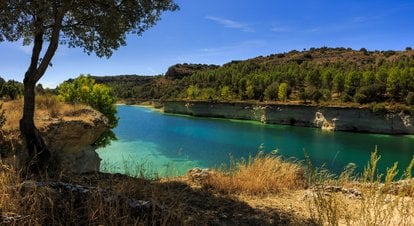
Lagunas de Ruidera
The miracle of water in La Mancha region includes magic waterfalls, lagoons, and beautiful streams

Fiestas de La Blanca & Celedón, Vitoria-Gasteiz
If you see a figure with an umbrella coming down from a church on a rope—then you are in Basque Country!
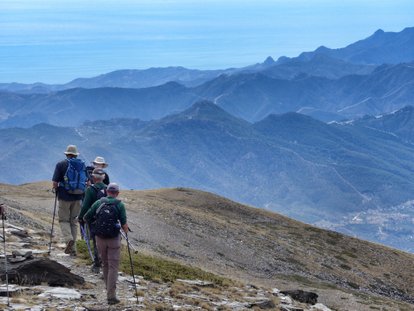
Hiking in Sierra Nevada
Spain has many incredible places for hiking, where the beauty of the mountains can be fully experienced

Sitges Carnival
The Sitges Carnival attracts more than 250,000 people to see its bright show and colourful parties, making it one of the most popular carnivals in the world

Angulas (Baby Eels)
A traditional dish that resembles spaghetti at first glance
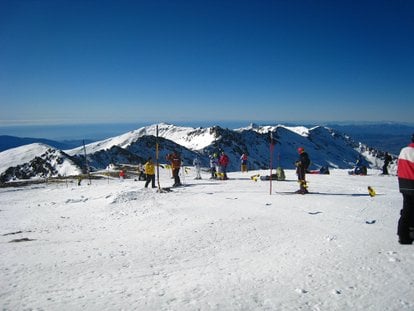
Sierra Nevada Ski Resort
Your best winter vacation awaits in a mountain range in Southern Spain
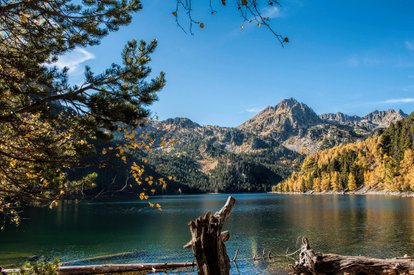
Aigüestortes and Sant Maurici Lake National Park
Explore the scenic mountains and lakes of the Pyrenees in the warm season

Rapa das Bestas, Sabucedo
Come to Galicia to observe the unique wild mountain horses get rounded up, trimmed and marked

Sagrada Familia
Gaudí's unfinished masterpiece is being incarnated by modern architectors and paralelly visited by millions of admirers

Casa Milà (La Pedrera)
This architectural masterpiece is unlike anything else built in the 20th century, the total culmination of Gaudí's boundless imagination

El Caminito Del Rey (King's Path)
Ready to experience one of the biggest attractions outside of Malaga?
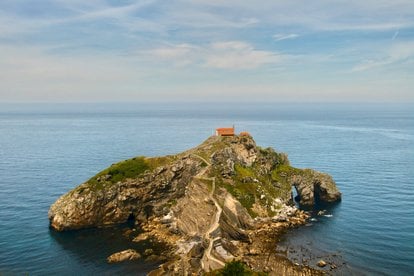
Gaztelugatxe
A small island connected to the mainland by a medieval bridge and 231 steps
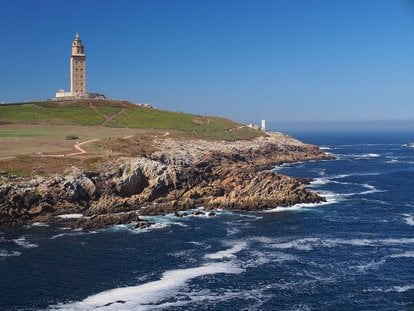
Tower of Hercules
The ancient but well-preserved lighthouse has operated since Roman times

Cádiz Carnival
A giant fiesta with thousands of satirical performing groups
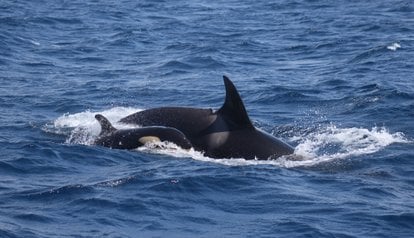
Whale Watching
Don't miss your chance to get close to these marine mammals in their natural habitat in the Strait of Gibraltar
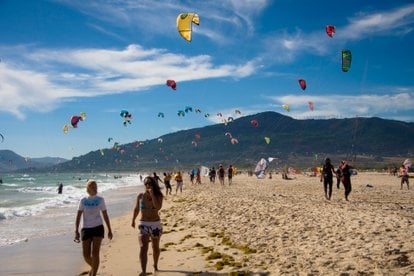
Kitesurfing & Windsurfing
Visit Tarifa, the kiting and windsurfing capital of Europe
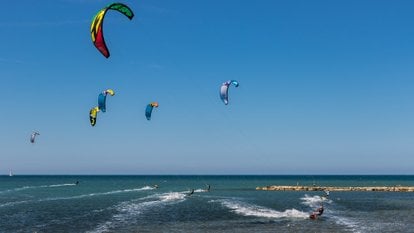
Kitesurfing & Windsurfing
Plenty of beaches with thermal winds to choose from

Halloween in Madrid: Events, Parties & Traditional Celebrations
Plenty of scary attractions and parties to choose from in Madrid

Running of the Nudes in Pamplona
Partially or entirely nude animal rights activists expose the “naked truth” about animal cruelty before the Pamplona’s bull run

Christmas Markets in Spain
Colorful and cozy Christmas markets in Spain ignite a desire to come back to this country again and again

Torello Carnival (Carnaval de Terra Endins)
One of the wildest festivals in Catalonia

Semana Santa in Granada
A busy week packed with more than 30 emotional street processions

Mediterranean Cruises
Enjoy an award-winning vacation, highlighting picture-perfect coasts, ancient history, and fine cuisine

Saffron Harvest
The most expensive spice on Earth can cost up to $10,000 per pound

European Hot-Air Balloon Festival
The best hot-air balloons in the region gather for one week of spectacular flights

Motril Air Show
Witness more-than-impressive aerial acrobatics at the Motril waterfront

Festival Aereo Internacional Torre del Mar
One of the best locations for airshows in Spain

Azkena Rock Festival
Enjoy live music at the Azkena Rock Festival, the ultimate destination for rock and roll enthusiasts

Sitges Film Festival
Visit one of the world's premier international festivals

Mad Cool Festival
Join Mad Cool Festival for four unforgettable days of music and lively energy in Madrid

Concert Music Festival
Join the Concert Music Festival for top-tier performances and magical nights under the Spanish sky












